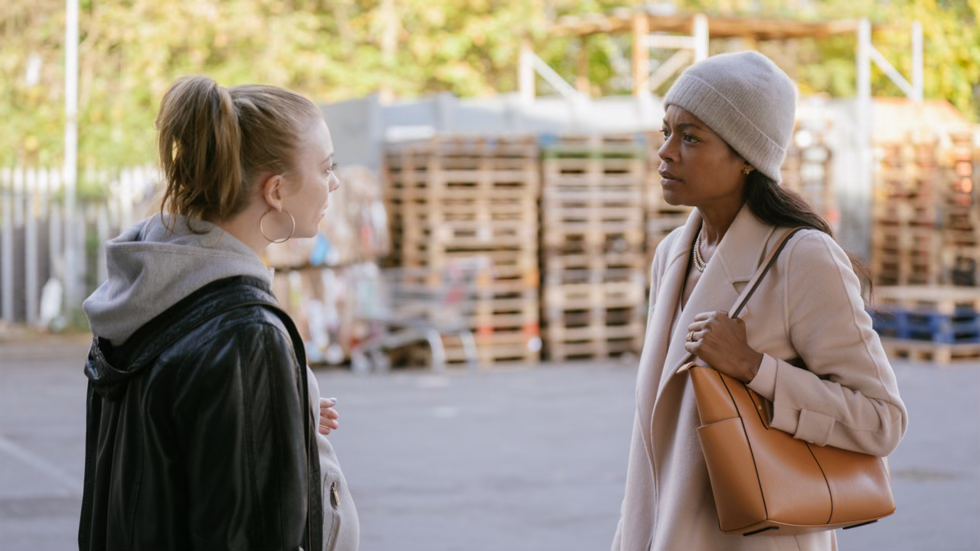About a week ago, The Scholar Wife and I snuck off to the movies to see The Wasp, a small-budget, small-cast psychological thriller playing at The Quad, an art house on West 13th that we have rediscovered and put back into our rotation. The movie is based on a play of the same name, by English-based playwright Morgan Lloyd Malcolm, who also wrote the screenplay.
The story is typical of modern theater — two women who were schoolgirl friends and then enemies reunite. Carla is struggling financially and desperate to get her five children out of a chaotic existence. Heather is wealthy, successful, unhappily married and childless. Heather has a proposition for Carla. They haven’t seen each other for years, and the consequences of their reunion are irreversible. The dramatic tension comes from revelations about the past and from the intentions and secrets of each character in real-time.
Malcolm wrote both the play and the screenplay, so we have a great opportunity here to see how the story plays out in different mediums. Fret not, The Middlebrow is not one of those writers who always believes the book is better or the play is better. I think, for example, that the book and film of Being There are equals in quality, despite being very different. I prefer the film of Glengarry Glenn Ross to the play, and the film of Rosencrantz & Guildenstern are Dead, too.
Based on reading the play script for The Wasp, I’m coming down on the side of the play, and I hope to be able to explain why without spoiling anything. The shortest way to say it is that this story seems to benefit from the intimacy and claustrophobia of a live performance in a small theater. The movie, though tautly directed, has too much air.
Two-handers like this have been growing in popularity as costs to mount live productions have risen (along with the costs for everything else). In some markets, like New York and California, it’s no longer legal or practical to stage productions with volunteer casts and crew, even if the producers are only hoping to recoup costs.
There are dramatic problems with two person plays because a story shouldn’t be as simple as a boxing match — outside forces should influence the outcome and decisions during the conflict. Heck, I guess even boxing matches have that. In a two person play, those influences are out of sight and if they are too far out of the writer’s mind, you wind up watching an argument, which can arouse curiosity, but is not always entertaining or enlightening. It’s like watching Liam and Noel Gallagher fight backstage — pure trivia.
So, for a play, with its generally smaller budget, the two character story is convenient, but you risk boring the audience, unless you can keep the tension high and the pressure from off stage real enough that it compresses and cooks the characters. The problem with a movie, with it’s usually larger budgets, is that a director might want to give a human form to every element of conflict, and risks losing focus.
In the end, I think The Wasp shows restraint as a movie and maintains tension as a play. In that, they are equal and a lot alike. To my surprise, what makes the play work better than the film comes down to how each handles the metaphor of the title.
The title refers to a tarantula wasp, which stings giant spiders and injects them with its young, keeping them alive long enough for larvae to grow and burst forth, eventually killing the host. The idea is that once a tarantula wasp strikes, the action cannot be undone. No matter how much time passes, the host must give birth.
The movie adds a reference to a wasp’s nest in Heather’s house. It works visually, but is odd in the film’s narrative and confuses the issue. Is Heather’s home host to the offspring, or is it Heather? As I write this, I realize there’s an argument to be made either way, but I think the latter is the answer.
So it’s a flourish, and a damned good one, but it adds some air to the movie that the story doesn’t need.
That said, any way you can see or read it, I’d say The Wasp is worth your time.


